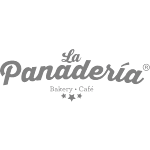When your restaurant's phone is ringing off the hook, ReachifyAI steps in—handling orders and answering questions with unmatched accuracy, freeing your staff, and keeping customers happy.
Get a restaurant phone system that works for you
and keep your existing number.





























Rudy Macias, Fractional CTO
Hear how ReachifyAI elevated La Panadería's guest experience

Hear a recorded example of our AI in action.
ReachifyAI is proven across single locations and multi-location brands. Whether you’re a single-location owner/operator or an operations executive looking for a solution to support franchisees, ReachifyAI is built for you.
Our AI restaurant phone system was designed alongside real restaurants of every size, giving us the insights to help you streamline operations, reduce missed calls, and deliver a consistent guest experience no matter how big or small your team is.
Growing every day
Every single year
Always reliable
More than a phone system, it’s a complete restaurant AI solution. Packed with powerful features and available 24/7, it keeps your business running smoothly day and night. Add a new team member with our restaurant AI.





Everything you need to handle more calls, serve more customers, and grow your business with our advanced AI phone system
Clients report up to 200% growth in online sales with SMS and voice ordering.
Let your team focus on in-house restaurant operations instead of juggling calls.
Service every call — without hiring more staff, thanks to our AI phone agent.
Block robocalls and never waste a second again.
Every caller gets a response—even during rush hour.
One end-to-end system. No setup fees. Month-to-month contract.

Find out what your customers will experience in 3 simple steps with our AI phone system
They dial your same number, and ReachifyAI answers instantly as your AI host.
Ask questions, place an order, receive links over SMS, and more through our AI host for restaurants.
No missed orders. No staff interruptions. Less spam calls. Restaurant AI that handles the load.
Get started quickly with zero technical complexity
Connect with your phone provider or port it — no disruptions.
No integration required, but get more from it if you use Square or Olo.
You'll be live in days — with hands-on help the whole way.
See what our restaurant owners have to say about ReachifyAI.
